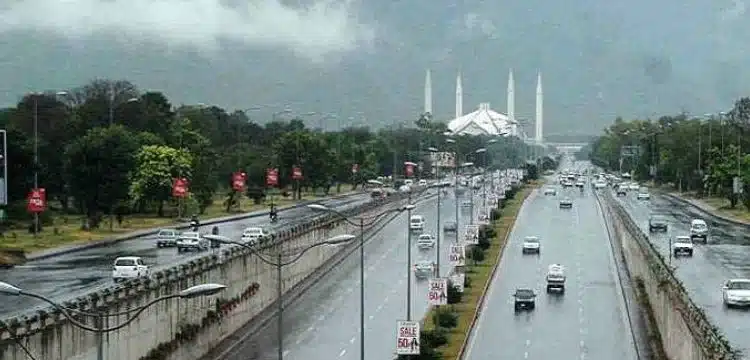[vc_row][vc_column][vc_column_text dp_text_size=”size-4″]
Coldwave conditions persist in Islamabad, Rawalpindi, and various parts of Pakistan, accompanied by dense fog in isolated pockets of the country’s eastern and northern regions.
The Pakistan Meteorological Department (PMD) issued a warning amid the intense cold, cautioning residents of the twin cities about dense fog and consistently low daytime temperatures. The public is advised to exercise caution due to the ongoing weather conditions, with chilly winds expected in certain areas of the capital.
Read more: Weather Alert: Islamabad Covered in Dense Fog, Temperature Takes a Dip
As of today, the daytime temperature in Islamabad hovers around 11 degrees Celsius, with a forecasted nighttime plunge to 6 degrees Celsius. The Meteorological Office indicates no likelihood of rain in Islamabad, Rawalpindi, or the Potohar region on Wednesday or Thursday.
Concerns about air quality arise as the federal capital’s air quality registers above 275, categorized as very unhealthy. The pollution level poses health risks, urging individuals to limit outdoor activities if experiencing symptoms like difficulty breathing or throat irritation.
Looking at the broader weather outlook for Pakistan, dense fog is anticipated to persist over the plain areas of Punjab, Khyber-Pakhtunkhwa, upper Sindh, and Islamabad in the coming days. Meanwhile, partly cloudy weather is expected in Kashmir, Gilgit-Baltistan, Khyber Pakhtunkhwa, and Balochistan.
The recorded minimum temperatures in the last 24 hours reflect the severity of the cold spell, with Leh reaching -12 degrees Celsius, Skardu at -10 degrees Celsius, and Gilgit, Astore, and Kalam at -07 degrees Celsius. Srinagar also experienced a minimum temperature of -05 degrees Celsius.
The prevailing weather conditions in Islamabad and other parts of Pakistan underscore the challenges posed by the winter season, with the combination of coldwave and dense fog affecting daily life and necessitating precautionary measures. As residents cope with low temperatures and reduced visibility, staying informed about weather updates and heeding advisory warnings becomes crucial for safety and well-being.
[/vc_column_text][/vc_column][/vc_row]











